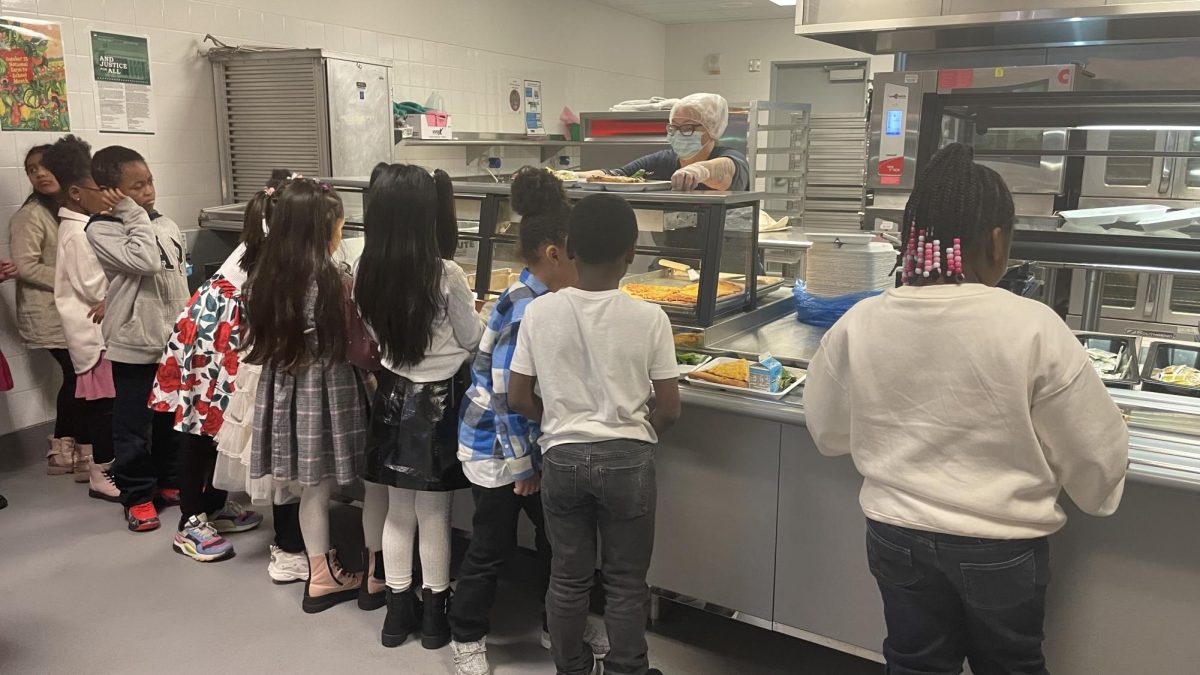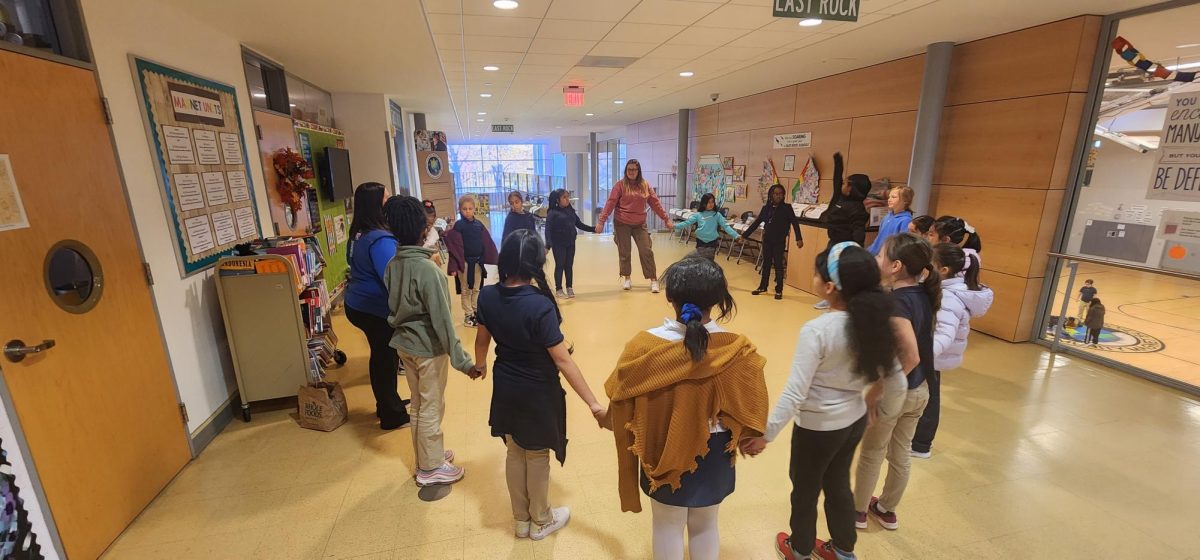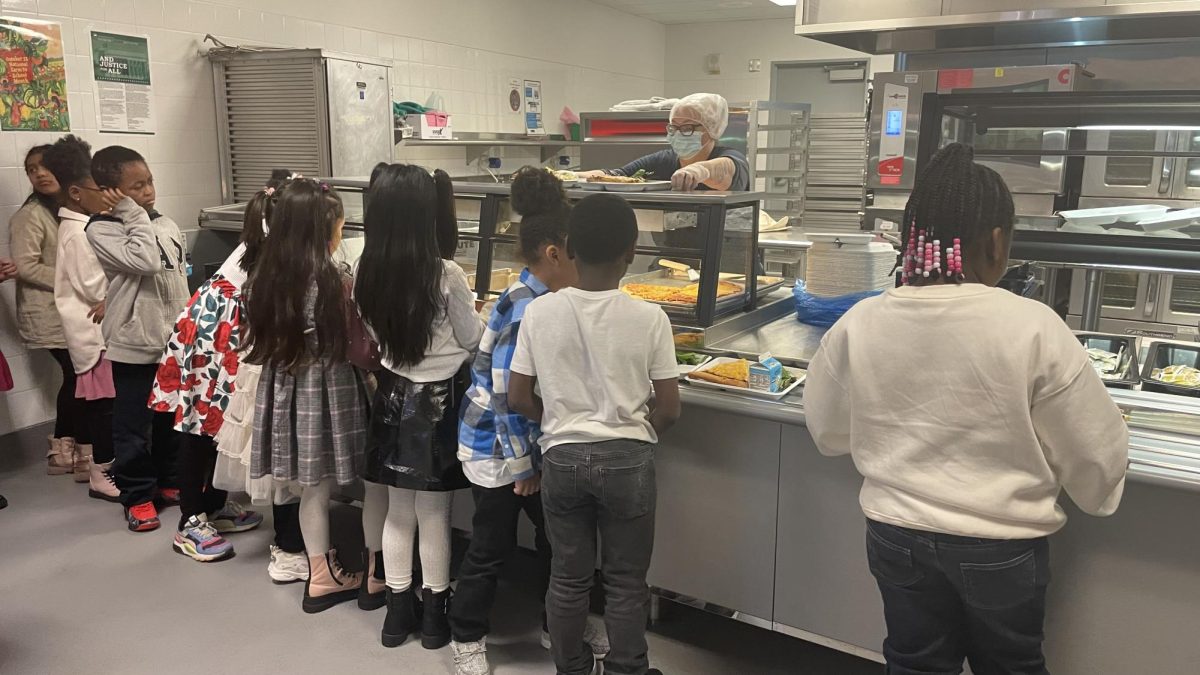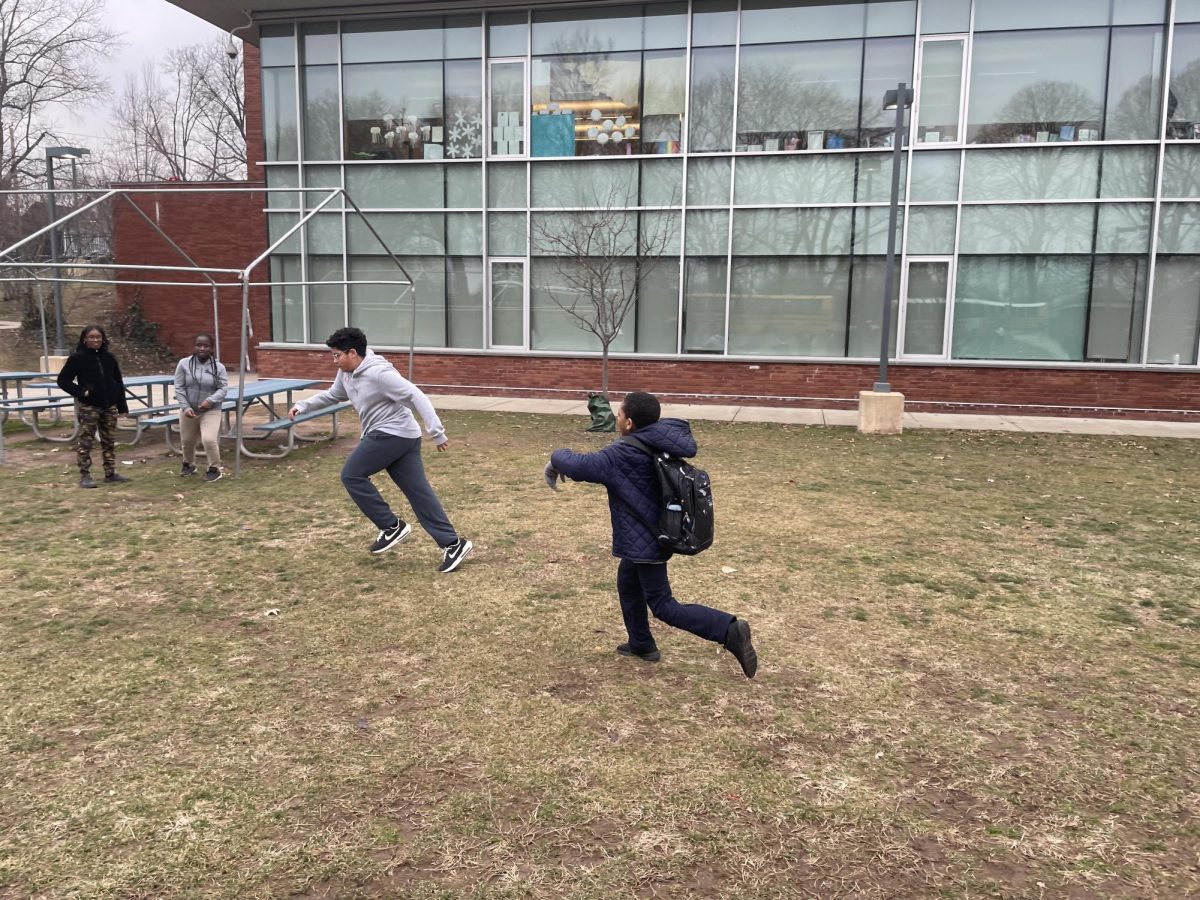Are you actually hungry for a burrito at 10:40 am?
If the answer is “No!” then you have a lot in common with many students at the East Rock Community & Cultural Studies Magnet School.
Lunch times at East Rock School vary from grade to grade. But many students say that the spacing of meals—the school serves breakfast, lunch, and supper—leaves many with grumbling stomachs or faced with a full tray of food when they have recently eaten breakfast.
As a result, according to the East Rock Record Fall/Winter 2024 Survey, 78 percent of students say they are “often hungry during the school day.” Only about half of those who responded to the survey agreed that lunch comes at a good time.
“If I’m really, really hungry then it can be very distracting,” said Autumn Dixon, a sixth grader at East Rock School.
This year, second, third, and fifth graders eat lunch at 10:40 am, kindergarteners, first, fourth, and sixth graders eat at 11:15 am. Students in grades seven and eight have lunch at 11:50 am.
The school also now serves supper, b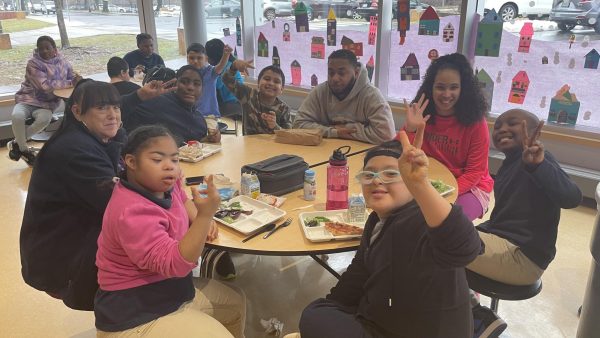 ut the timing recently moved from 2:30 to 4 pm, which means some students go many hours without food. Still, the East Rock Record Survey found that almost 42 percent of students like being able to have supper at school.
ut the timing recently moved from 2:30 to 4 pm, which means some students go many hours without food. Still, the East Rock Record Survey found that almost 42 percent of students like being able to have supper at school.
When students get hungry during class, Julie Villanueva, a special education teacher, allows her students to have a snack. “We get hungry throughout the day,” she said.
Some other teachers also allow students to eat at non-mealtimes. But according to the East Rock Record Survey, only about one-quarter of students said their teachers allowed them to eat in class. Ms. Villanueva believes students could benefit from more food options in the cafeteria. She also suggested that the school offer juice in addition to milk.
Part of the being-hungry problem may also be that students may not like the school lunch offerings. Ms. Dixon, who often brings food from home, said her classmates get hungry throughout the day and ask her what she has brought.
“At lunch people will go up to me and ask for my food, and it can get really annoying,” she said. Ms. Dixon recognized that some students must rely only on what the school cafeteria offers, which is a challenge when students do not like the options.
But students are also discouraged from sharing their food, one among school rules regarding food.
Sabrina Breland, principal of East Rock School, said there are not many school-wide rules for eating in the classroom, but she does not like students eating in classrooms because she does not want to attract rodents.
The no-sharing rule is also for safety reasons, she said. “No sharing food. There are germs and allergies. Some students can’t have everything.”
Students do complain about the food offerings at mealtimes. Haven Pickett, a fifth grader at East Rock School, said there is room for improvement in the menu. The food, he said, is often “either too wet or too dry,” and he would prefer more appealing options.
Many students we spoke with also
complained about the quality of the food, which can keep some of them from finishing—or even starting their meals. Angela Maiocco, who teaches fourth grade, said the food options do not always appeal to students.
During the morning announcement that shares that day’s cafeteria menu, she usually hears “more boos than clapping.” Ms. Maiocco also has noticed that students get hungry during the day. While Ms. Maiocco would typically limit snacking to students who feel sick or nauseous, she has been more lenient with eating in the class to ensure all her students can feel their best.
However, not all students can bring snacks if they want to. Ms. Maiocco said she did request the cafeteria to supply midday snacks for her students, but the ask was denied. “It’s really not fair to ask the kids to bring snacks because not everyone can bring them. It’s also not fair to ask nine and 10-year-olds to wait that long for lunch,” she said.
Principal Breland said one possible reason that cafeteria options don’t always appeal to students, is that those in charge of creatin the menus are “trying to get stuff that is reportedly healthier than what a normal K-8th grader would choose.”
She may be right. Baron Young, who in summer 2023 became Director of Food Service for the New Haven Public Schools, said school meals must follow nutrition guidelines required by law.
“We receive funds from the government, so we have to follow the government’s rules. All meals need a grain, a vegetable, a fruit, a milk, and a meat or meat alternative,” he said. So, things like chips, soda, and candy, he said, “We are not offering those things.”
Mr. Young wishes schools could offer chocolate milk — but they are not allowed to. “We can only offer unflavored milk,” he said. Mr. Young also said school food service administrators must serve allergy-friendly foods to keep all students safe.
Still, Mr. Young said he is trying to make menus more appealing to students. He is concerned not only with students not eating their meals and going hungry but also with the issue of waste caused by uneaten meals.
“Changes are coming,” he said adding, that he is thinking of a chili option “full of flavor, full of color” and pasta dishes like chicken alfredo. Still, Mr. Young said that “change cannot come overnight.” He must plan and work with vendors to get ingredients.
To pick new foods that students like, Mr. Young has done taste testing at different schools to find recipes that “are healthy and appealing to the students.” Two taste test items: Squash and a Kale Caesar Salad.
Even though Mr. Young is working to make meals that students will enjoy, actual timing of meals is decided at each school. Every day, he said, the New Haven Public Schools serve 14,000 to 15,000 meals.
If students are hungry between official mealtimes, Mr. Young suggested having “share tables” that would have snacks like fruit and milk. This way, he said, students could help themselves to a pick-me-up that still meets nutrition regulations. 


